Introduction
Elimination diets have become a cornerstone for many individuals seeking to uncover hidden food sensitivities and improve their overall health. Imagine finally feeling relief from chronic symptoms like bloating, fatigue, or skin rashes after years of searching for answers. By identifying and eliminating specific foods that cause adverse reactions, elimination diets offer a pathway to better health and well-being.
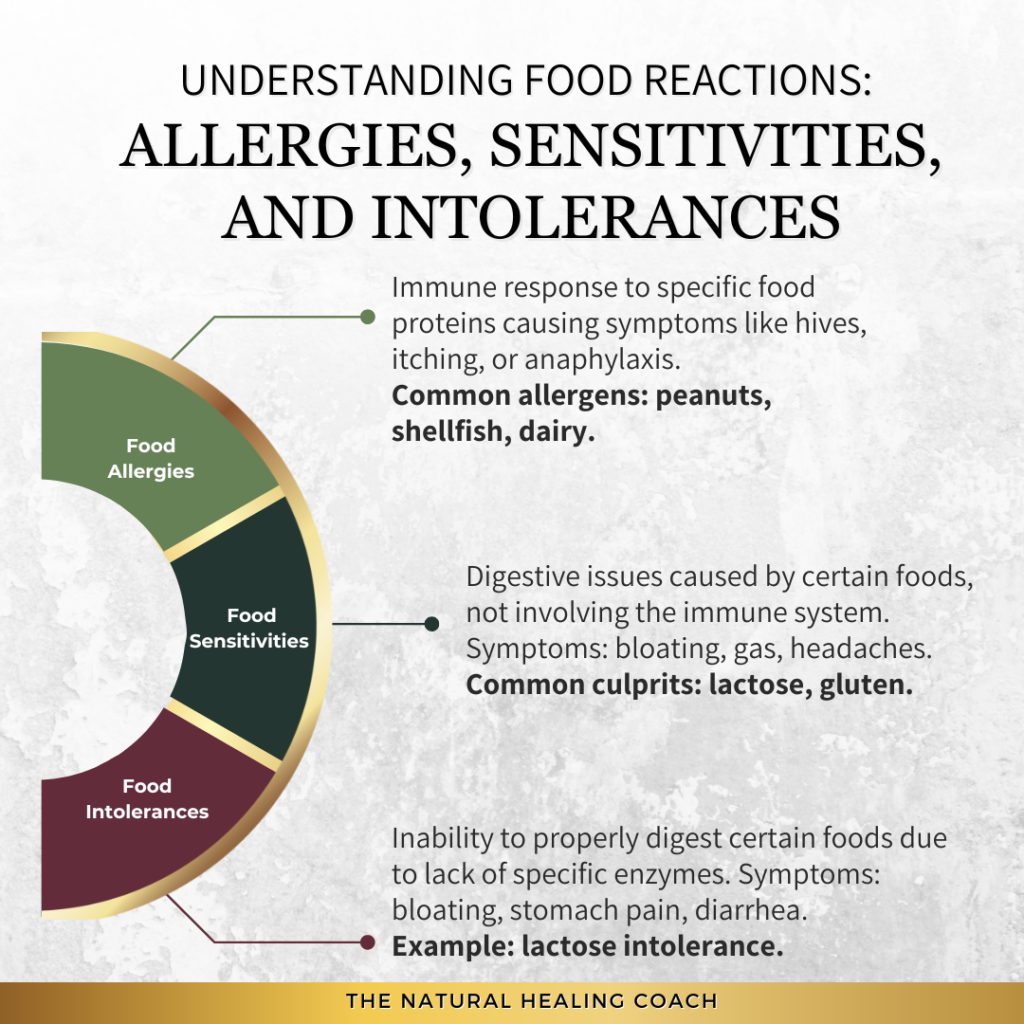
Elimination diets play a crucial role in identifying food sensitivities, intolerances, and allergies that often go undiagnosed through traditional medical tests. According to the American College of Allergy, Asthma, and Immunology, food allergies affect an estimated 32 million Americans, while food intolerances are even more widespread, impacting approximately 15-20% of the population.
By removing potential trigger foods and then systematically reintroducing them, individuals can observe how their bodies react, making it easier to identify foods that may be causing symptoms such as digestive issues, migraines, joint pain, and skin conditions.
This process not only helps in pinpointing specific food sensitivities but also empowers individuals to take control of their health by making informed dietary choices.
To understand how to effectively implement an elimination diet, it’s important to first grasp what an elimination diet entails.
What is an Elimination Diet?
An elimination diet is a structured dietary program designed to identify foods that may be causing adverse reactions in the body.
The Elimination Diet Process

The primary purpose of an elimination diet is to pinpoint food sensitivities, intolerances, and allergies by systematically removing certain foods from the diet and then gradually reintroducing them while monitoring for any symptoms.
The process involves two main phases: the elimination phase and the reintroduction phase. During the elimination phase, individuals remove foods that are common allergens or suspected triggers, such as dairy, gluten, soy, and certain nuts, for a set period, typically two to six weeks. The reintroduction phase follows, where these foods are slowly added back into the diet one at a time to observe any reactions.
How Are Elimination Diets Different From Other Diets
Elimination diets differ from other diets primarily in their purpose and structure. While many diets focus on weight loss, nutritional balance, or managing specific health conditions, elimination diets are specifically designed to identify and manage food-related issues. Unlike lifestyle diets that may allow for gradual changes and flexibility, elimination diets require strict adherence to the removal and reintroduction protocols to accurately identify problem foods. This targeted approach helps individuals uncover hidden food sensitivities and make informed decisions about their dietary choices, leading to improved health and well-being.
Learn how an elimination diet can help you identify food sensitivities and improve your health. Discover the steps to a healthier you! 🌱 #EliminationDiet #HealthTips #Wellness Share on XTypes of Elimination Diets
Basic Elimination Diet
The basic elimination diet involves the simple removal of common allergens such as dairy, gluten, soy, and nuts. This straightforward approach is often the first step for those new to elimination diets.
Elimination Diet Considerations
Elimination diets offer powerful tools for identifying and managing food sensitivities and improving overall health. However, they can be restrictive and require careful planning and commitment. Understanding the pros and cons of each type can help individuals choose the best approach for their specific health needs.
While all elimination diets are temporary and designed to identify food triggers, the ultimate goal is to reintroduce foods and create a long-term, balanced diet that avoids known triggers and supports overall health.
Elimination Diet Comparisons
| Type of Elimination Diet | Used For | Pros | Cons | Duration |
|---|---|---|---|---|
| Basic Elimination Diet | General food sensitivities, digestive issues, skin conditions | Simple to follow, helps identify common allergens, suitable for beginners | May not identify all food sensitivities, limited scope | Typically 2-6 weeks, until triggers are identified |
| Comprehensive Elimination Diet | Chronic digestive issues, persistent skin conditions, unexplained chronic symptoms | Thorough identification of food sensitivities, comprehensive approach | More restrictive, requires careful planning, can be challenging to maintain | Typically 4-8 weeks, until triggers are identified |
| Food Allergy Elimination Diet | Known food allergies, severe allergic reactions, anaphylaxis management | Targeted approach, effective for managing known allergies, prevents severe reactions | Requires prior allergy testing, limited to identified allergens | Typically 2-4 weeks, until triggers are identified |
| FODMAP Elimination Diet | Irritable Bowel Syndrome (IBS), small intestinal bacterial overgrowth (SIBO), other digestive disorders | Effective for managing digestive symptoms, scientifically backed, structured approach | Can be complex to follow, requires detailed knowledge of FODMAP foods, restrictive | Typically 6-8 weeks, until triggers are identified |
| Rotation Diet | Preventing new food sensitivities, managing existing intolerances, improving overall dietary diversity | Reduces the risk of developing new sensitivities, promotes dietary variety | Requires meticulous planning, can be difficult to implement consistently | Ongoing with periodic evaluations to identify triggers |
| Autoimmune Protocol (AIP) | Autoimmune diseases such as Hashimoto’s thyroiditis, rheumatoid arthritis, lupus | Reduces inflammation, supports gut health, tailored for autoimmune conditions | Highly restrictive during the elimination phase, requires significant lifestyle adjustments | Typically 4-6 weeks, until triggers are identified, followed by a reintroduction phase |
| Modified AIP Diet | Autoimmune diseases, particularly after the initial AIP phase | Allows for reintroduction of foods, helps identify personal triggers, more flexible | Requires careful monitoring during reintroduction, can be a slow process | Ongoing, based on individual tolerances and reactions during reintroduction |
Benefits of an Elimination Diet
Elimination diets offer numerous benefits that can significantly impact one’s health and quality of life. By following a structured approach, individuals can achieve the following:
Identifying Food Sensitivities and Intolerances
One of the primary benefits of an elimination diet is its ability to pinpoint specific food sensitivities and intolerances. By systematically removing and then reintroducing foods, individuals can observe their body’s reactions and identify which foods trigger adverse symptoms. This knowledge allows for more precise and effective dietary choices, leading to a reduction in symptoms such as bloating, headaches, and skin issues.
Improving Digestive Health
Many people experience digestive issues like bloating, gas, and stomach pain without knowing the root cause. An elimination diet helps to identify foods that may be contributing to these problems. By eliminating these trigger foods, individuals often see a significant improvement in their digestive health, leading to more comfortable and regular digestion.
Enhancing Overall Well-Being
Beyond specific symptoms, an elimination diet can lead to enhanced overall well-being. By reducing or eliminating foods that cause negative reactions, individuals often experience increased energy levels, better sleep quality, and a more balanced mood. This holistic improvement in health can contribute to a higher quality of life and greater day-to-day comfort.
Embarking on an elimination diet can be a powerful step towards better health and well-being. By identifying and removing problematic foods, you can gain valuable insights into your body’s needs and take control of your health. If you’re ready to start your journey, consider seeking guidance from a health professional to ensure a safe and effective process.
Challenges of an Elimination Diet
While elimination diets can be highly effective, they also come with challenges that individuals should be aware of:
- Difficulty in maintaining dietary restrictions: Adhering to strict dietary rules can be challenging, especially when dealing with cravings and limited food options.
- Social and dining challenges: Eating out or attending social gatherings can be difficult, as it may be hard to find compliant food options and avoid cross-contamination.
- Emotional and psychological impact: The restrictive nature of the diet can lead to feelings of deprivation, frustration, and social isolation.
- Risk of nutritional deficiencies: Eliminating certain foods can result in a lack of essential nutrients if not properly managed with alternative sources.
- Potential for misidentifying food triggers: Without careful monitoring and a structured reintroduction phase, it can be easy to misidentify which foods are causing adverse reactions.
Navigating the challenges of an elimination diet can be demanding, but the potential benefits for identifying food sensitivities and improving overall health make it a worthwhile endeavor. Understanding these challenges and preparing for them can increase the likelihood of a successful outcome. With a clear plan and the right support, an elimination diet can be a powerful tool for transforming your health.
Now that we’ve explored the various aspects of elimination diets, let’s delve into the specific steps to ensure successful implementation and lasting results.
10 Essential Steps to a Successful Elimination Diet
Embarking on an elimination diet can be a transformative journey towards better health and well-being. By systematically identifying and removing food triggers, you can significantly reduce or eliminate chronic symptoms. Here are ten essential steps to ensure your elimination diet is successful:
Before starting an elimination diet, thorough research and planning are crucial. Set realistic goals and familiarize yourself with the foods you will need to avoid and the potential benefits of the diet. This initial preparation sets the foundation for your success.
During the elimination phase, you will remove specific foods from your diet. These commonly include dairy, gluten, soy, nuts, and other potential allergens. This phase typically lasts between 2-6 weeks, allowing your body time to clear out any substances that may be causing adverse reactions.
Creating a detailed meal plan is essential to ensure you have a variety of suitable recipes and nutritious options. This step helps prevent boredom and ensures you maintain a balanced diet while avoiding the eliminated foods.
Tracking your food intake and symptoms in a food diary is vital. This practice helps you monitor your progress and identify any patterns. An effective food diary includes detailed notes on what you eat, when you eat it, and any symptoms you experience.
After the elimination phase, you will gradually reintroduce the eliminated foods one at a time. This step is critical for identifying which specific foods trigger adverse reactions. Carefully monitor your body’s response to each food and note any symptoms in your food diary.
Recognizing patterns and pinpointing problem foods is essential for the success of your elimination diet. Consulting with a healthcare professional can provide valuable insights and confirm your findings, ensuring you accurately identify your triggers.
Based on your findings, make necessary adjustments to your diet. This may involve permanently eliminating certain foods or finding suitable alternatives. The goal is to maintain a balanced and nutritious diet that supports your overall health.
Sustaining dietary changes over the long term requires strategies for incorporating new habits into your daily life. Focus on creating a lifestyle that supports your health and well-being, including a diverse and nutritious diet.
Joining support groups or finding a diet buddy can provide motivation and encouragement. Professional guidance from a nutritionist or health coach can also offer personalized advice and support, enhancing your success.
Regular health check-ups and ongoing monitoring are important to ensure your diet continues to meet your needs. Be prepared to adjust your diet as needed based on any new findings or changes in your health status.
By following these ten essential steps, you can navigate the complexities of an elimination diet and achieve lasting improvements in your health. With careful planning, support, and monitoring, an elimination diet can be a powerful tool for uncovering food sensitivities and enhancing your overall well-being.
Common Mistakes to Avoid
Embarking on an elimination diet can be highly effective, but it’s important to avoid common pitfalls that can undermine your success. Here are key mistakes to watch out for:
- Skipping the Preparation Phase Proper preparation is crucial for a successful elimination diet. Skipping this step can leave you unprepared for the challenges ahead and make it harder to stick to the diet.
- Not Keeping a Detailed Food Diary A detailed food diary is essential for tracking your intake and symptoms. Failing to keep an accurate record can make it difficult to identify food triggers and monitor your progress.
- Rushing the Reintroduction Phase The reintroduction phase is critical for pinpointing specific food sensitivities. Rushing this step can result in missed triggers and inaccurate conclusions about which foods cause adverse reactions.
By avoiding these common mistakes, you can enhance the effectiveness of your elimination diet and achieve better health outcomes.
How Coaches Help with Elimination Diets
Elimination diets can be challenging to navigate alone, but working with a coach can provide the necessary support and expertise to ensure success. Here’s how coaches can help:
- Personalized Guidance and Support Coaches offer tailored advice based on your specific health needs and goals, ensuring that your elimination diet is customized to suit you best.
- Expertise in Identifying Food Triggers and Managing Symptoms With their knowledge and experience, coaches can help you accurately identify food triggers and manage any symptoms that arise during the process.
- Assistance with Meal Planning and Finding Suitable Recipes Coaches can assist in creating meal plans and finding recipes that fit within the guidelines of your elimination diet, making the process easier and more enjoyable.
- Emotional Support and Encouragement Elimination diets can be emotionally taxing. Coaches provide the encouragement and support needed to stay committed and positive throughout the journey.
- Helping to Avoid Common Pitfalls and Mistakes Coaches can help you navigate common challenges and mistakes, ensuring you adhere to the diet correctly and effectively.
- Providing Accountability and Motivation Regular check-ins and support from a coach provide accountability and motivation, helping you stay on track and achieve your health goals.
Working with a coach can significantly enhance the effectiveness of an elimination diet, providing the support, knowledge, and encouragement needed to succeed.
Final Thoughts
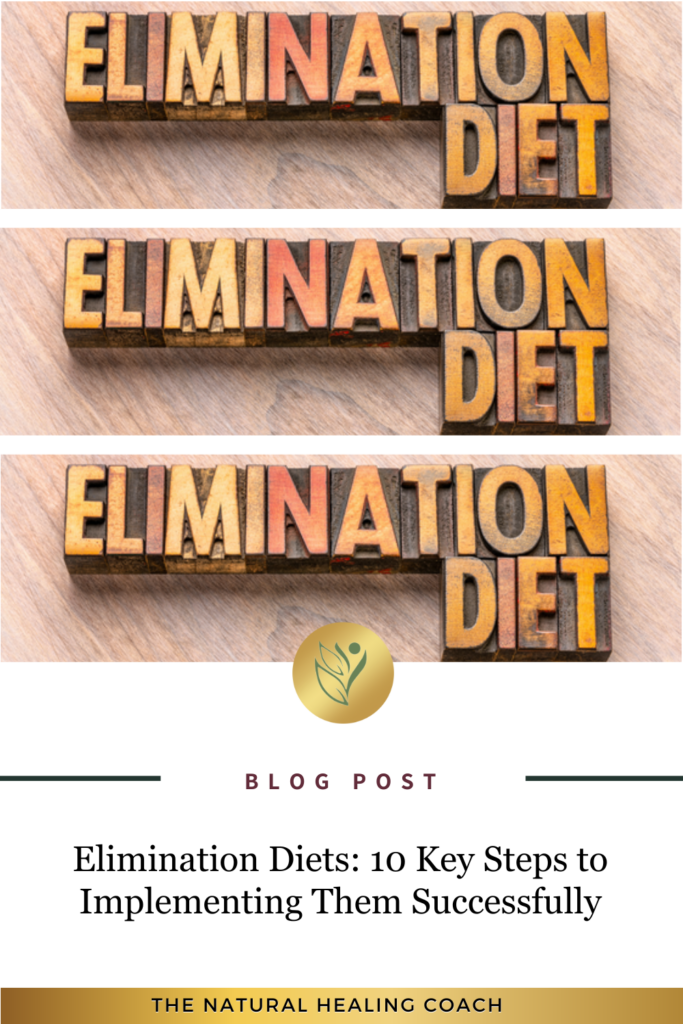
Embarking on an elimination diet can be a transformative journey towards better health and well-being. By systematically identifying and removing food triggers, you can gain valuable insights into how your body reacts to different foods and make informed decisions about your diet. Remember, success comes from careful preparation, meticulous tracking, and a patient approach to reintroducing foods.
While the process can be challenging, the potential benefits of reduced symptoms, improved digestion, and overall enhanced health are well worth the effort. With the right support and commitment, an elimination diet can lead to a healthier, more vibrant life. If you’re considering an elimination diet, consider seeking guidance from a healthcare professional or coach to ensure a safe and effective journey.
Call to Action
I invite you to share your experiences or questions about the elimination diet in the comments section below. Your stories and inquiries can provide support and inspiration to others on a similar journey.
For more tips and updates on health and wellness, subscribe to our newsletter. By staying connected, you’ll receive valuable information and resources to help you achieve your health goals.
If you’re interested in more personalized support, I encourage you to visit my page dedicated to the Autoimmune Protocol (AIP). As a certified autoimmune protocol coach, I offer comprehensive coaching options to guide you through this process. Learn more about AIP and the coaching services I provide at naturalhealing.coach/autoimmune-protocol. Together, we can work towards optimal health and well-being.
If you are looking for more tips and support, join me over on my group page, The Village – A Natural HEALing Community, to get tons of information and tips to help you take your HEALTHY EATING and ACTIVE LIVING to the next level.
REFERENCES:
- Elimination Diets: A Comprehensive Overview – Healthline
- Nutrition and Immunology: The Impact of Diet on Immune Function – Harvard T.H. Chan School of Public Health
- Why and How To Start an Elimination Diet – Cleveland Clinic
- Autoimmune Diseases and the Benefits of Elimination Diets – National Institute of Allergy and Infectious Diseases (NIAID)
- Efficacy of Elimination Diets in Eosinophilic Esophagitis – Journal of Clinical Gastroenterology
- Mayo Clinic. (2021). Food Allergy.
- National Institute of Diabetes and Digestive and Kidney Diseases. (n.d.). Lactose Intolerance.
- National Center for Biotechnology Information. (2014). The Autoimmune Protocol Diet Modifies Intestinal Microbiota.
MORE RELATED POSTS:
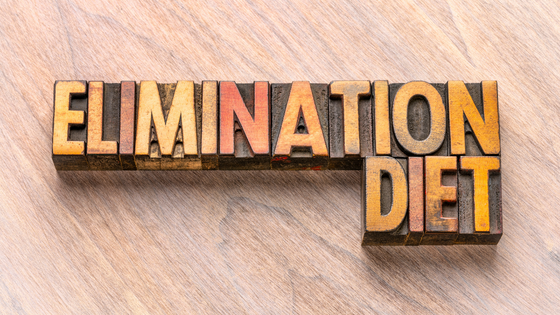
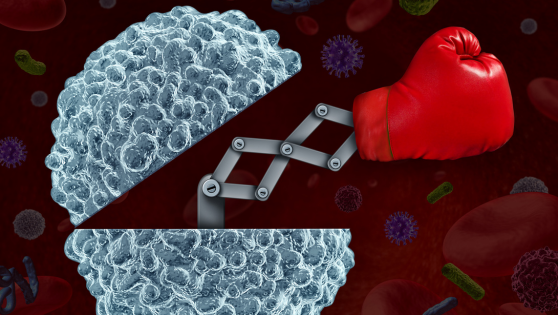



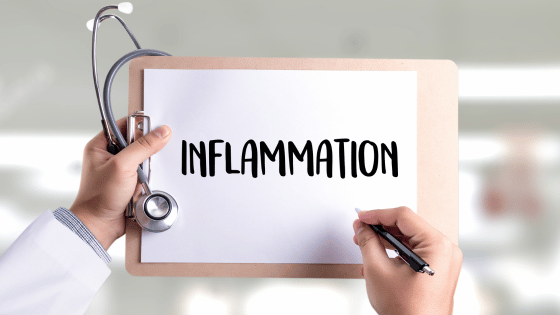

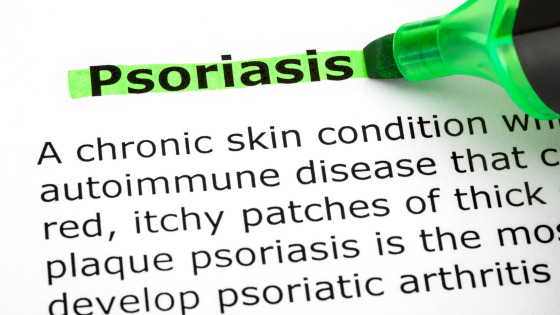
+leave a comment . . .